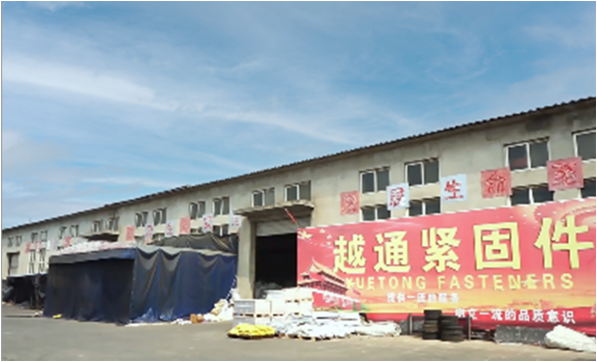Dec . 01, 2024 09:00 Back to list
Heavy Duty Threaded Rod for Industrial Applications and Structural Support Solutions
Understanding Heavy Threaded Rods Applications, Benefits, and Best Practices
Heavy threaded rods are essential components used across various industries, providing strength and stability in numerous applications. Known for their durability and load-bearing capabilities, these rods play a crucial role in construction, manufacturing, and mechanical environments. This article delves into the characteristics, uses, and best practices surrounding heavy threaded rods.
Characteristics of Heavy Threaded Rods
Heavy threaded rods are typically made from high-strength materials such as carbon steel, stainless steel, or alloy steel, which provides them with exceptional durability and corrosion resistance. They are manufactured in various diameters and lengths, making them versatile for different applications. The threading on these rods is usually coarse or fine, enabling them to accommodate various nuts and fastening systems.
The American Society for Testing and Materials (ASTM) has established standards for threaded rods, ensuring they meet rigorous quality criteria. Commonly used grades include ASTM A307 and ASTM A325, each designed for specific applications and load requirements. The choice of grade significantly impacts the rod's performance in construction and structural integrity.
Applications of Heavy Threaded Rods
One of the most common uses of heavy threaded rods is in construction projects, where they are employed to secure structural components, such as beams, columns, and frames. In addition to providing stability, they enable the creation of strong connections that can withstand heavy loads and environmental stresses.
In the manufacturing sector, heavy threaded rods are used in machinery assembly and equipment fastening. They provide essential support in various applications, from producing heavy machinery to building assembly lines. Their strength makes them suitable for high-stress environments where failure is not an option.
Moreover, heavy threaded rods are utilized in the installation of heavy equipment, such as boilers, generators, and HVAC systems. By anchoring these systems securely, threaded rods help maintain their operational efficiency and safety. The aerospace and automotive industries also employ heavy threaded rods in their design and manufacturing processes, where precision and reliability are critical.
heavy threaded rod

Benefits of Heavy Threaded Rods
The primary advantage of heavy threaded rods is their capacity to handle significant loads without deforming or breaking. This load-bearing ability is crucial in maintaining structural integrity in constructions and industrial setups. Furthermore, their resistance to environmental factors, such as moisture and chemicals, extends their lifespan and reduces maintenance costs.
Another benefit is their ease of installation. Heavy threaded rods can be quickly mounted and adjusted, allowing for efficient assembly and disassembly. This flexibility is particularly valuable in temporary structures or situations where components must be relocated or replaced frequently.
Best Practices for Using Heavy Threaded Rods
To maximize the benefits of heavy threaded rods, it is essential to follow best practices during installation and maintenance. Firstly, ensure that you select the appropriate grade and size of the threaded rod based on the specific application and load requirements. Consulting with a structural engineer can provide insights into the necessary specifications.
Installation should always be performed in accordance with established guidelines. Ensure that you use the correct tools, such as torque wrenches, to achieve the appropriate tension and prevent over-tightening, which can lead to material failure. Furthermore, using compatible nuts, washers, and other fastening devices will enhance the overall integrity of the assembly.
Regular inspection and maintenance of the threaded rods are crucial to ensuring long-term performance. Look for signs of wear, corrosion, or loosening, and address any issues promptly to prevent failures. Investing in quality heavy threaded rods and adhering to best practices can lead to safer and more durable structures and systems.
Conclusion
Heavy threaded rods are indispensable in modern construction and manufacturing, providing the strength and versatility necessary for secure, long-lasting structures. Understanding their characteristics, applications, and best practices helps ensure their effective use across diverse industries, ultimately contributing to overall safety and reliability. By selecting the right materials and adhering to installation guidelines, professionals can harness the full potential of heavy threaded rods in their projects.


